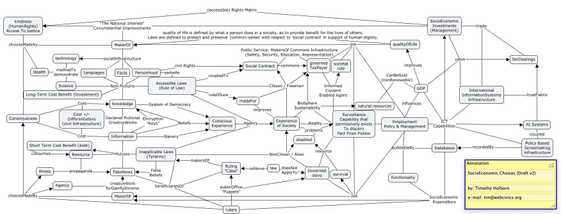Category Theory
Category theory is a general theory of mathematical structures and their relations that was introduced by Samuel Eilenberg and Saunders Mac Lane in the middle of the 20th century in their foundational work on algebraic topology. Nowadays, category theory is used in almost all areas of mathematics, and in some areas of computer science. In particular, many constructions of new mathematical objects from previous ones, that appear similarly in several contexts are conveniently expressed and unified in terms of categories. Examples include quotient spaces, direct products, completion, and duality. Source WikiPedia.
Applied Theory
Many of the issues that are part of common discourse online relating to issues like that are defined as fake news, disinformation or similar are considered to more accurately be described as a categorisation issue, where the classification of the content is not described in a manner that could or would otherwise be described as FitForPurpose.
So, a work purporting to be a #NonFiction #NewsArticle that is sought by the publisher / author, to be consumed as a contribution towards a person (observers) beliefs about the facts of a situation; whilst containing errors or statements that are not grounded in Reality may otherwise be defined as a work of fiction, rather than non-fiction; and in-turn there are an array of genre's and other classification tools (categories) that can be applied to the entire document and/or parts of the document or artifact. Therein, there's not really any such things as disinformation rather its misclassified information.
These sorts of semantics define the difference between knowledge systems vs. information systems; as are otherwise illustrated by the image provided below;
This diagram is intended to be intepreted by starting at the consciousness point; whereby there is then a choice about whether to create knowledge systems or information systems and this choice leads to consequential implications.
As such, the webizen environment seeks to employ ontologies that are able to be used within documents to declare the intended characteristics of various elements within artifacts. This is in-turn intended also to be foundationally employable via TemporalSemantics that are intended to support the causal process through which new or unpopular concepts may be subject to attacks, but then later found to be accurate. the distinction becomes; defining what the author / human agent / agent intended the document to state; and how they may in-turn be judged in connection to those statements overtime.
